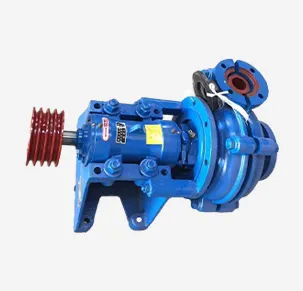English
- Afrikaans
- Albanian
- Amharic
- Arabic
- Armenian
- Azerbaijani
- Basque
- Belarusian
- Bengali
- Bosnian
- Bulgarian
- Catalan
- Cebuano
- Corsican
- Croatian
- Czech
- Danish
- Dutch
- English
- Esperanto
- Estonian
- Finnish
- French
- Frisian
- Galician
- Georgian
- German
- Greek
- Gujarati
- Haitian Creole
- hausa
- hawaiian
- Hebrew
- Hindi
- Miao
- Hungarian
- Icelandic
- igbo
- Indonesian
- irish
- Italian
- Japanese
- Javanese
- Kannada
- kazakh
- Khmer
- Rwandese
- Korean
- Kurdish
- Kyrgyz
- Lao
- Latin
- Latvian
- Lithuanian
- Luxembourgish
- Macedonian
- Malgashi
- Malay
- Malayalam
- Maltese
- Maori
- Marathi
- Mongolian
- Myanmar
- Nepali
- Norwegian
- Norwegian
- Occitan
- Pashto
- Persian
- Polish
- Portuguese
- Punjabi
- Romanian
- Russian
- Samoan
- Scottish Gaelic
- Serbian
- Sesotho
- Shona
- Sindhi
- Sinhala
- Slovak
- Slovenian
- Somali
- Spanish
- Sundanese
- Swahili
- Swedish
- Tagalog
- Tajik
- Tamil
- Tatar
- Telugu
- Thai
- Turkish
- Turkmen
- Ukrainian
- Urdu
- Uighur
- Uzbek
- Vietnamese
- Welsh
- Bantu
- Yiddish
- Yoruba
- Zulu
Telephone: +86 13120555503
Email: frank@cypump.com
Nov . 22, 2024 23:10 Back to list
ah slurry pump
Understanding AH Slurry Pumps A Comprehensive Overview
Slurry pumps play an essential role in various industrial processes, particularly in sectors such as mining, construction, and wastewater treatment. Among the many types of slurry pumps, the AH slurry pump stands out due to its robust design and efficiency in handling abrasive and viscous materials.
What is an AH Slurry Pump?
The AH slurry pump is a type of centrifugal pump specifically designed for the transportation of slurries, which are mixtures of liquid and solid particles. The design features of the AH pump make it particularly well-suited for dealing with high concentrations of solids, typically found in mining and mineral processing operations. The AH in its name signifies its designation as a heavy-duty pump, making it ideal for severe applications.
Key Features
1. Durable Construction AH slurry pumps are typically manufactured from high-chrome alloy materials or rubber linings, which provide excellent wear resistance against abrasive slurries. This durability extends the pump's life, reducing the frequency of maintenance and part replacements.
2. Efficiency These pumps are designed to operate efficiently across a wide range of conditions. Their hydraulic designs are optimized to provide maximum flow and head, ensuring that they meet the rigorous demands of industrial applications.
3. Variety of Sizes and Configurations AH slurry pumps come in various sizes and can be configured for different applications. This flexibility allows industries to select the pump that best meets their specific operational requirements.
4. Easy Maintenance The design of the AH pump includes features that facilitate easy access for maintenance and repair. This is crucial in industrial settings, where downtime can lead to significant productivity losses.
5. Versatile Application While primarily used in mining operations, AH slurry pumps are also found in wastewater treatment facilities, chemical processing plants, and even in the food industry where slurry transport is required.
ah slurry pump

How AH Slurry Pumps Work
The operational principle of an AH slurry pump is based on the centrifugal force created by the impeller's rotation. The slurry enters the pump through the inlet and is directed towards the impeller, which imparts kinetic energy to the particles and liquid. This energy converts into pressure as the slurry is discharged through the pump outlet.
The design of the impeller and volute casing is critical, as it ensures the maximum transfer of energy to the slurry while minimizing wear from abrasive materials. The majority of AH slurry pumps feature a cantilever shaft design, which reduces the risk of contamination and wear at the shaft seal.
Advantages of Using AH Slurry Pumps
1. Cost-Effectiveness The durable construction and efficient design of AH slurry pumps lead to lower operational costs over time. Reduced wear and maintenance result in fewer interruptions in production.
2. Improved Safety In industrial operations, handling slurries can pose various risks. The robust design and reliable operation of AH pumps enhance safety by reducing the likelihood of spills or equipment failures.
3. Enhanced Performance With their ability to handle high solid concentrations and abrasive materials, AH slurry pumps ensure consistent performance, which is vital for maintaining productivity in high-demand scenarios.
Conclusion
AH slurry pumps are a cornerstone in the efficient management and transportation of slurries in various industries. Their robust design, ease of maintenance, and adaptability make them an indispensable part of operational excellence in sectors facing demanding conditions. As industries continue to evolve and require more efficient solutions for slurry transport, the AH slurry pump remains a key player in achieving operational success. Understanding their features and benefits can empower organizations to make informed decisions and optimize their processes effectively.
-
Horizontal Split Case Pump with GPT-4 Turbo | High Efficiency
NewsAug.01,2025
-
ISG Series Pipeline Pump - Chi Yuan Pumps | High Efficiency, Durable Design
NewsAug.01,2025
-
Advanced Flue Gas Desulfurization Pump with GPT-4 Turbo | Durable & Efficient
NewsJul.31,2025
-
ISG Series Vertical Pipeline Pump - Chi Yuan Pumps | Advanced Hydraulic Design&Durable Construction
NewsJul.31,2025
-
ISG Series Vertical Pipeline Pump - Chi Yuan Pumps | Energy Efficient & Low Noise
NewsJul.31,2025
-
pipeline pump - Chi Yuan Pumps Co., LTD.|High Efficiency&Low Noise
NewsJul.31,2025










